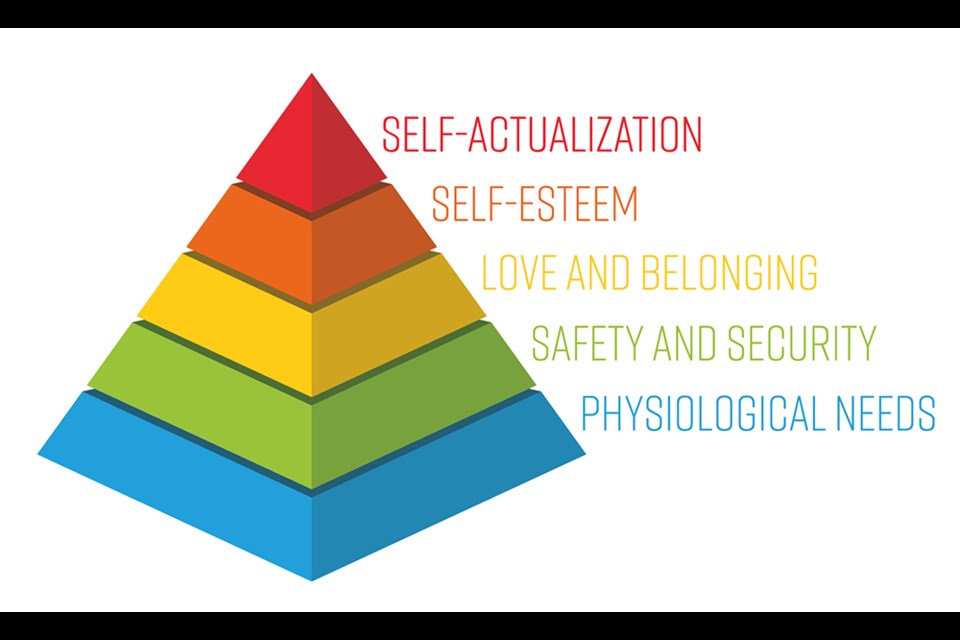I often hear people express: “My needs are not being met” or “How do I tell the difference between a need and a want?”
It can be confusing but, fortunately, we have a template that defines our basic needs and from that we have an understanding of the difference between a need and a want.
The standard model for basic needs was put forward by psychologist Abraham Maslow. His model, referred to as the hierarchy of basic needs, identifies physiological needs or comfort needs such as eating, drinking, clothing. For example, changing the diaper of a baby to relieve their physical discomfort.
The model defines safety needs of the individual as the need for a safe and predictable environment. Maslow stated that humans have a need for love and belonging. Each of us needs relationships with others, family connections and friends to feel whole. Maslow identified that esteem for self was critical for physical, emotional and mental health.
On his list of basic needs is something called self-actualization. What does this mean?
In a nutshell, self-actualization means we need to feel that we are living up to our potential. We need to be moving forward and striving to be the best person we can be.
Lifelong learning is key to self-actualization. This is always a work in progress.
We do not achieve self-actualization because then we would stop striving to move forward and we would soon be stuck. Stuck is the opposite of self-actualization.
Maslow’s Hierarchy of Needs is often illustrated as a pyramid with physiological needs, followed by safety, then love and belonging, self-esteem and self-actualization. The idea of a pyramid of needs prompted the question: “Are basic needs ranked?” Maslow said no.
At any given time, individuals may have some of their needs partially met and they may move back and forth according to life experiences and the current environment. An example can be our relationships with others. Sometimes they are full and available and we feel loved and that we belong. Other times, not so much.
The basic needs in Maslow’s hierarchy have a relationship to one another and it is important to see that trickle down (or up) that connects to many things we may think are not included. “What about our need for freedom?”
Maslow stated that freedom would facilitate the process of having our basic needs met. For example, freedom supports the need to live our best life. Some have had the unfortunate experience of not being cared for as a child but they see an opportunity to move forward and they take it.
There comes a time in life when we can leave behind the powerlessness that may have been our childhood and we take charge of getting our needs met. We have that choice.
Understanding our basic human needs is a step toward ensuring we get what we need to have a quality life.
Deborah Joyce is a registered psychotherapist with a practice in Powell River and Comox Valley. Questions can be forwarded to her through the Peak.
Join the Peak's email list for the top headlines right in your inbox Monday to Friday.



